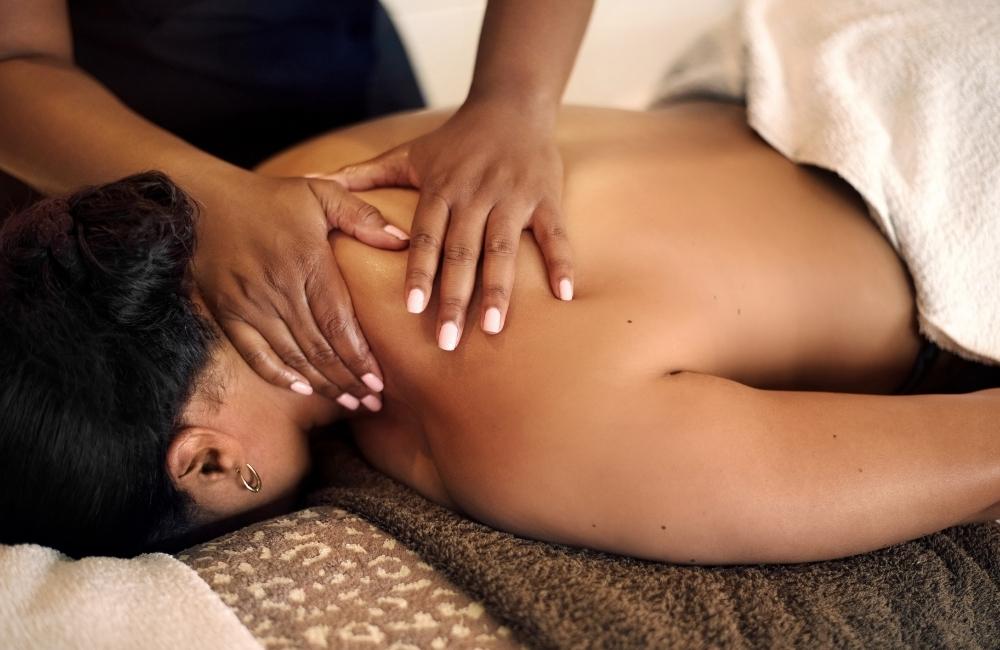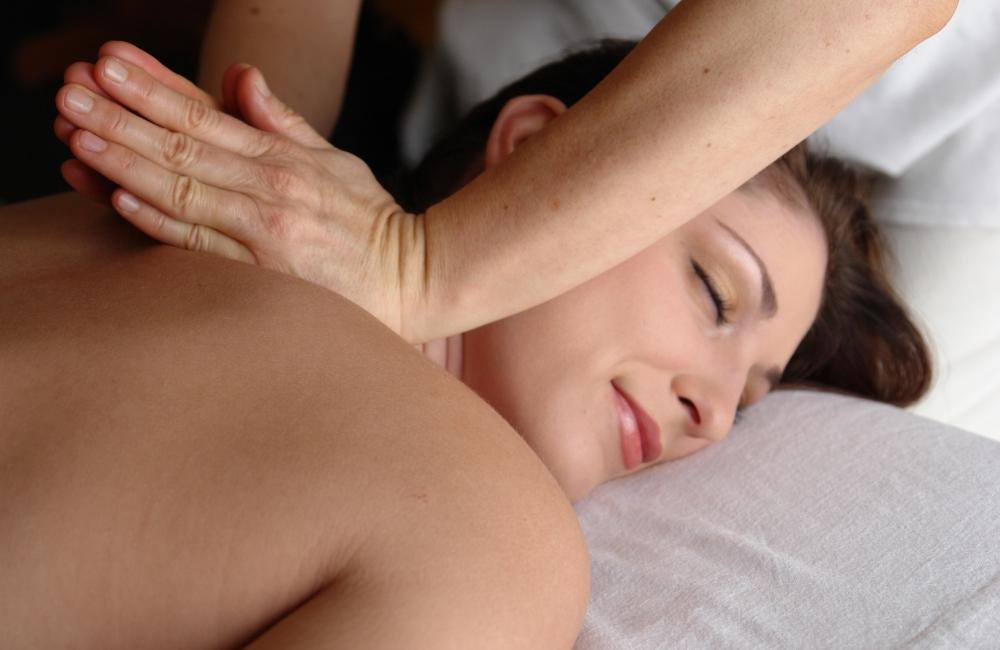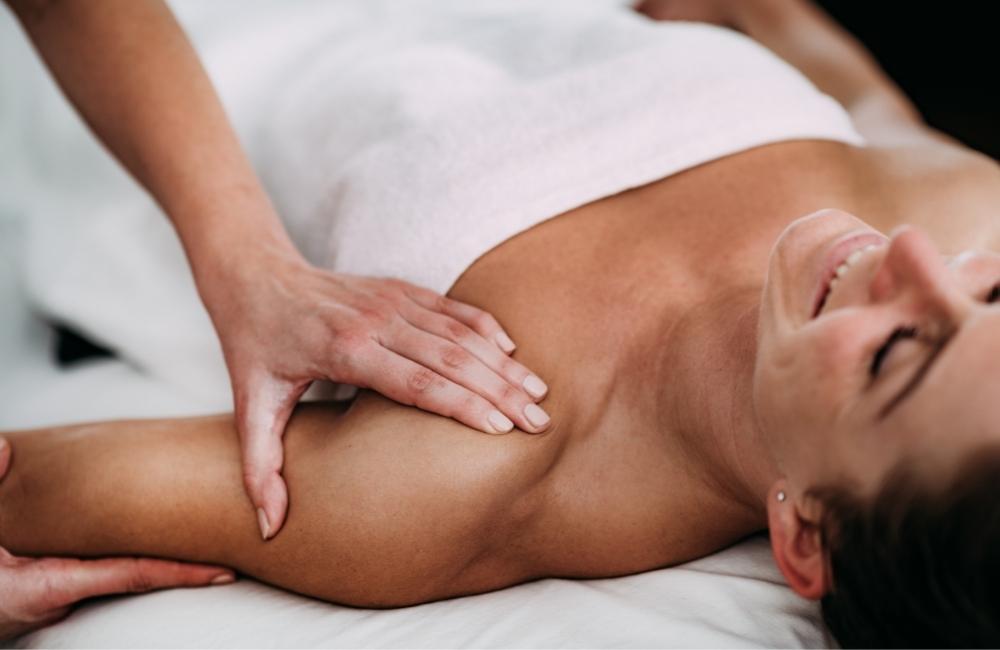Your body craves a massage, but you’re unsure which one to get. Swedish and deep tissue massage are two popular forms of massage therapy you can get for your health. Both massages use different techniques, so one might better fit you than the other.
Here, we’ll take a look at Swedish massage vs deep tissue massage to know what’s the differences between the two and determine which one might be right for you the next you visit your massage therapist.
Let’s dive in!

Table of Contents
What is a Swedish massage?
A gentle type of massage therapy that encourages relaxation and healing, Swedish massage involves the whole body. Sometimes also called a classic massage, this highly relaxing technique releases tension in your deep muscles and connective tissues. Swedish massage involves a combination of circular and kneading movements to loosen up tight muscles and promote blood circulation. The massage therapist will use vibrations and tapping to work the body.
How does Swedish massage work?
The full-body massage requires you to remove all your clothes. However, a white sheet will cover your body during the procedure. To work on the area, the therapist will move the sheet around. They’ll typically apply massage oil or lotion to protect your skin from friction. You should get it if you’re new to massages and want gentle pressure. The massage uses long strokes to loosen tension in muscles and relax the body while it’s being performed.
A Swedish massage usually mixes five different motions. They are:
- Effleurage – begins and ends the massage. Warms up or soothes muscles. Uses circular and gliding strokes.
- Petrissage – deep kneading in a rhythmic motion. Help to loosen muscles and improve the circulation of blood.
- Tapotement – improves blood flow and drains lymphatic fluids by tapping and drumming rhythmically.
- Friction – particularly effective for joints and muscles. Done by rubbing on the area.
- Vibration – The technician repeatedly shakes the body with fingers or hands to loosen muscle tension.
The benefits
- Drains lymphatic fluid
- Loosens up knots in muscles
- Possibly helpful for people living with fibromyalgia
- Stimulates nerves
- Reduces the production of cortisol (stress hormone) to boost mood.
- May alleviate anxiety and depression
- Help with sleep disorders
- Relieve symptoms associated with PMS
- Increases blood flow
- A complete spa-like treatment
Swedish massage is a popular massage type for relaxation. A study by the Journal of Clinical Psychiatry investigated whether Swedish massage could reduce symptoms of Generalized Anxiety Disorder in those who weren’t receiving the treatment. The study concluded that the participants who received the Swedish massage had significant reductions in their anxiety levels. Moreover, Swedish massage can also relieve circulatory problems. In another study, a four-week course of weekly Swedish massage sessions significantly reduced heart rate and blood pressure in women with hypertension.
Who is the best candidate for Swedish massage?
It’s great for anyone who needs to decompress, spend money on themselves, and improve their circulation. Health professionals recommend massage to people who feel pain, have low immunity, or are stressed.
Who is not a good candidate for this massage?
If you have any of the following conditions, you may not be a good candidate for a Swedish massage:
- High blood pressure
- Nausea or dizziness
- Internal or external wounds
- Cardiac conditions
- Diabetes
- Epilepsy
- Kidney disease
- Liver disease
- Cancer
- Pregnancy
- Contagious skin conditions
Side effects
Swedish massage is mainly used to relax, so it’s a relatively safe choice. Most massage injuries are caused by techniques other than Swedish massage. At most, Swedish massage may trigger muscle soreness, but nothing serious. Make sure your spine remains neutral, and you do not make any sudden movements. Since the technique only uses gentle movements, there is little risk of injury.

What is deep tissue massage?
Deep tissue massage uses a concentrated amount of pressure using slow and deep strokes. This treatment targets the inner layers of your muscles and fascia (also known as connective tissue). Specifically, it treats chronic muscle tension, strains or injury from physical activity, and musculoskeletal problems. It releases tension deep within muscles and also breaks scar tissue that forms after injuries. Deep tissue massage may include the same stroking and kneading movements as Swedish massage, yet it is much more intense.
How does a deep tissue massage work?
Swedish massage is the basis for many deep tissue techniques, and the therapist will use long, flowing strokes and apply pressure using elbows, hands, or arms to target the problem areas. It treats chronic aches and stiffness such as stiff neck and upper back, low back pain, leg muscle tightness, and sore shoulders. Deep tissue massage relieves pain and restores movement by breaking down these adhesions. To do this, massage therapists often apply direct deep pressure or friction across the muscles to the target areas.
The benefits
- Lowers blood pressure levels and heart rate
- Reduction of inflammation from injury
- Helps with chronic pain
- Releases deep muscle tension
- Helps with back pain
- Provides stress relief
- It makes motion easier in the spot of scar tissue
- Helps with arthritis
- Good as prenatal massages
Who is the best candidate for deep tissue massage?
Deep tissue massages help to release any knots or adhesions that might have formed due to injury. Since targeted pressure is applied on specific areas, it helps break the tension formed in the injured muscles. Deep tissue massage is mainly great for those with sports injuries. This is why it’s preferred by athletes, runners, or anyone else who experiences chronic muscle injuries.
Who is not a good candidate for this massage?
If you have any of the following conditions, you are not a good candidate for deep tissue massage:
- Active cancer
- Uncontrolled high blood pressure
- A blood clotting disorder
- Acute inflammation
- Osteoporosis
- A herniated disc
- A recent surgery
- Contagious skin conditions
- If you are pregnant, deep tissue massage is not recommended in the first trimester
Side effects
Deep tissue massages require a certain level of discomfort and pain tolerance and are not for everyone. You should avoid this technique if you have a low pain tolerance. If you request that the therapist reduce the pressure, you may not benefit from the massage. Similarly, if you tense certain areas to cope with the pain, it may not be right for you. Furthermore, people with accidents or infections should not go for it.

Key Differences between Swedish massage and Deep Tissue massage
As we have explored Swedish massage vs deep tissue massage in detail, let’s compare the two massage therapies:
| Swedish massage | Deep tissue massage |
| Involves the use of light pressure | More focused pressure used |
| Gentle on muscles and connecting tissues | Intense on muscles and connecting tissues |
| Focuses on relaxing the body | Focuses on relieving knots and adhesions formed due to injury or muscle strain |
| Full body | Concentrated on problem areas |
| Fit for those who are new to massage | Fit for those who have some amount of tolerance to pain and discomfort |
How to prepare for a massage session
Make sure you communicate with your therapist. Describe the areas you would like them to focus on or areas you would like them to avoid. Make sure you mention any allergies or sensitivities, as certain oils or products may not suit you.
Once you’ve communicated your needs, it’s time to get ready for your massage. Make sure you’re comfy so you can move around. If you have long hair, clip it up or braid it since you’ll spend a lot of time lying face down on the massage table.
Drink plenty of water before the massage. This will help relax your muscles and flush out any toxins released during the massage. At the same time, avoid caffeine and alcohol since they make you tense and interfere with your relaxation.
Use the bathroom before your session. This will prevent interruptions during your massage.
Relax a little after your massage. It’s good to take a hot bath, shower, or lie down for a while. Be sure to drink plenty of water the next day and apply ice to the affected areas if you feel sore.
Finally, let go of your expectations. Massage is a time to unwind and let go of your stressors.
What to wear
- Comfortable, snug-fit clothing
- Breathable fabrics like cotton or linen
- A change of clothes if you’re getting an oil massage
- Shorts or a sports bra you feel comfortable wearing
For Swedish massage and Deep Tissue massage, you will usually have to remove your clothes and cover yourself with a white sheet.
What’s the right massage technique for me?
Let’s take a quick look at the difference between Swedish and deep massage to help you decide.
Swedish massage is gentler than deep tissue massage and better suited for beginners or those looking for some downtime. Since the massage stimulates the nervous system, it’s a gentle, relaxation-focused treatment. This commonly offered massage targets the areas of muscle and tissue by using long, flowing strokes across the skin.
Deep tissue massage is a more targeted treatment. This massage works into the deeper layers of muscle and tissue, using shorter, more specific strokes. This type of massage can be helpful to people with specific areas of muscle pain.
So, which is the right massage for you? For the ultimate relaxing massage, get a Swedish massage. Deep tissue massage is great if you are looking for a more targeted, therapeutic treatment. Most spas offer these massages, and staff can recommend one if you’re not sure. Make sure an accredited massage therapist does it.
Comparison of the different massage techniques
| Swedish | Deep tissue | Hot stone | Sports | Shiatsu | Thai |
| For relaxation | For relaxing knots and adhesions in muscles and fascia | Relax, heal and loosen muscles | For athletes to help with their pain and injuries | For overall health and rejuvenating the body | Relax the whole body in a more active way |
| Uses gentle pressure on the body | Uses firm pressure on the problem areas | Uses placing hot stones on the body or using them for massaging | Uses fast strokes, compression, friction, pressure point therapy and more | Uses rhythmic movement of fingers, arms and elbows on acupressure points | Uses moving and stretching the person – a rigorous form of massage |
| Involves full body | Concentrated on the problem areas | May involve the full body | The muscle depends on the sport the athlete plays and the soft tissues of the body | Done on certain acupressure points of the body | Involves full body |
| For beginners | For athletes or those with a certain amount of pain tolerance | For beginners | For athletes | For beginners | For those who want an energetic massage |
Bottom line
Massages are relaxing, stress-busting, and great for your mind, body, and soul. Now you should know the two popular types of massage: Swedish vs deep tissue. If you’re looking to book a massage, be sure to ask your licensed massage therapist which type would be best for you. Remember that these two massages differ in the amount of pressure applied, so be sure to communicate your preference to your therapist.
So, the next time you hit a spa, you know exactly what to ask for!